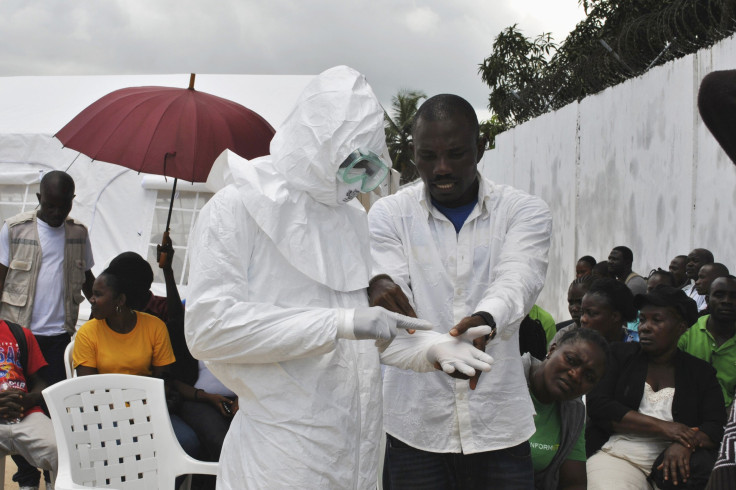Ebola Outbreak: Hazmat-Style Suits Face Distribution Crunch In Africa

Health workers combating the worst Ebola virus disease outbreak in history are struggling to keep up with a growing demand for personal protective equipment. International aid agencies face significant difficulties in their efforts to ensure all medical professionals who need hazmat-style suits are able to get enough of them to keep themselves adequately protected from the deadly hemorrhagic fever.
The World Health Organization said Friday it has had trouble keeping up with the surge in demand for personal protective equipment suits as the Ebola outbreak has spread. “We now estimate that we need 3 million [PPEs] for the duration of the outbreak,” WHO representative Dan Epstein told International Business Times. “I know that we’ve shipped on the order of 400,000 or something like that. It’s less than we need because of the logistics also of distributing it, getting it to air, and getting it to all the Ebola treatment centers.”
The U.S. Centers for Disease Control and Prevention has released detailed PPE recommendations for health workers working in Ebola hot zones. It urges all the medical workers to wear gloves, a fluid-resistant or impermeable gown, goggles or a face shield. It suggests augmenting these items by employing double gloving, disposable shoe covers and leg coverings in environments where large amounts of bodily fluids, feces or vomit are present. Many health-care professionals go even further, wearing the respirators and hooded full-body ensembles that resemble space suits and are recognizable from the ubiquitous news images coming out of Guinea, Liberia and Sierra Leone.
Organizations such as WHO are training groups of people to teach African health workers to properly select and don the protective suits in hopes of cutting transmission rates. “It’s very critical that people put them on correctly and take them off correctly and then discard them; they’re all one-time use,” Epstein said. “There’s a certain way you have to take them off, and if you do it wrong, it basically negates the protection.”
The two most prominent manufacturers of hazmat suits are the 3M Co. and E.I. du Pont de Nemours and Co., aka DuPont. “DuPont Protection Technologies has been collaborating with organizations like WHO and Medecins Sans Frontieres, MSF, [Doctors Without Borders] since the onset of the outbreak to make available to them our personal protective garments,” DuPont Protection Technologies representative Sandra James said.
“We have already tripled production of our most relevant products for the treatment of infected patients,” James wrote via email. “We have also worked hard to shift product stocks geographically and made available a broader range of styles suitable for various treatment levels.”
3M has donated almost 1 million respirators to help with the Ebola response, while DuPont has absorbed more than $250,000 in air-freight charges to help treatment facilities get up and running on the ground in Africa, according to company officials.
“We are keeping up, we’re meeting the needs of the requests,” 3M representative Donna Fleming Runyon told IBTimes Friday. “We’re continuing to work with our nonprofit partners and keeping up with their requests.”
© Copyright IBTimes 2024. All rights reserved.





















